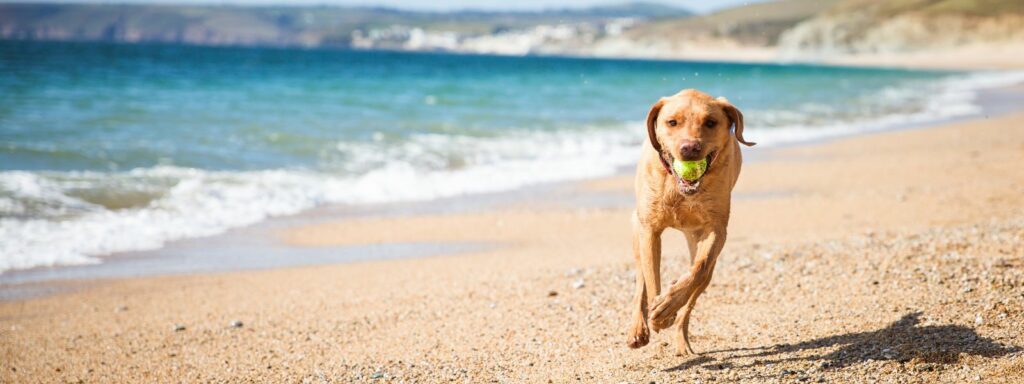How to Keep Your Dog Safe During Hot Summer Days
 Cecilie Hemsen Berg
Cecilie Hemsen Berg
When the temperatures soar, our furry friends feel the heat just like we do. Summer, with its lure of sunny days and outdoor activities, can be a wonderful time to bond with your dog. However, it also brings unique challenges and dangers for our canine companions. In this blog, we’ll dive into essential tips and insights on how to keep your dog safe, comfortable, and happy during the hot summer months. So, grab a cool drink, settle in with your four-legged friend, and let’s explore how to make this summer a safe and enjoyable season for your beloved dog!
Why Heat is a Hazard to Dogs
Before we explore the ways to protect your furry friends, it’s crucial to understand why hot weather poses such a significant risk. Dogs do not sweat in the same way humans do. They primarily cool off through panting and to a lesser extent through sweating from their paw pads. This makes them more susceptible to overheating and heatstroke. Breeds with thick coats, brachycephalic (short-nosed) breeds, and older or overweight dogs are particularly at risk.
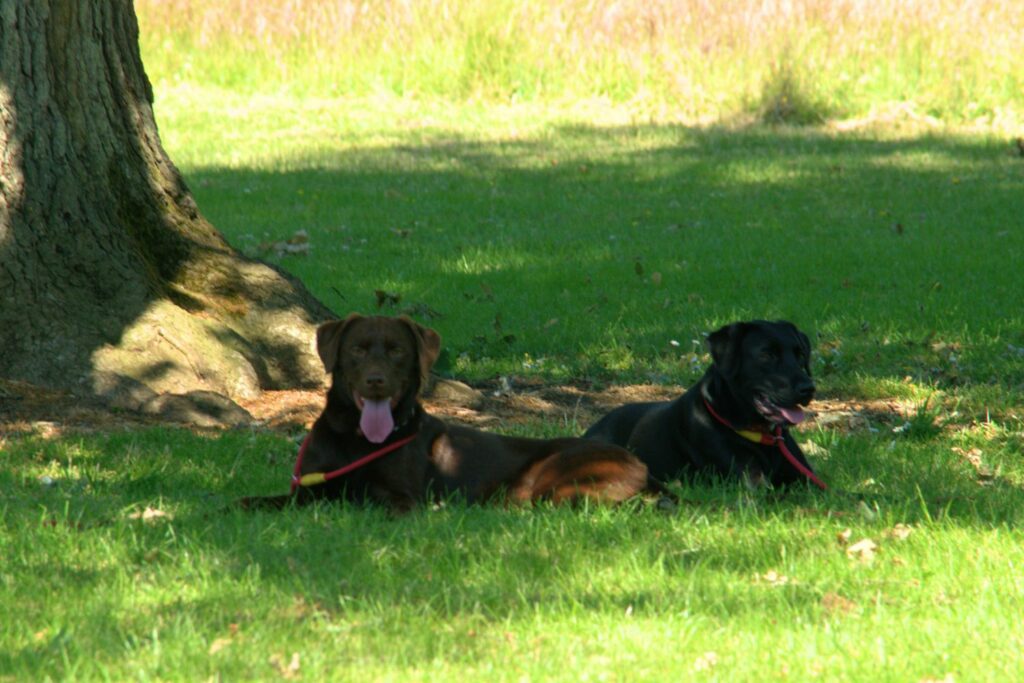
Heatstroke: A Deadly Danger
Heatstroke is a serious condition that occurs when a dog’s body temperature rises to a dangerous level. It can lead to multiple organ failure and, if not treated promptly, can be fatal. Symptoms of heatstroke include excessive panting, drooling, reddened gums, vomiting, diarrhoea, mental dullness, and collapse. If you suspect your dog is suffering from heatstroke, it’s crucial to lower their body temperature gradually by moving them to a cooler area, applying cool (not cold) water, and immediately seeking veterinary attention.
Burnt Paws and Hot Surfaces
The summer sun can heat pavements, sand, and metal surfaces to temperatures that can burn your dog’s paws. A good rule of thumb is to place the back of your hand on the surface for 5 seconds. If it’s too hot for you, it’s too hot for your dog’s paws. Opt for walks during the cooler parts of the day, like early morning or late evening, and avoid hot surfaces whenever possible.
Dehydration and Sunburn
Just like humans, dogs can get dehydrated and sunburnt. Ensure your dog has access to fresh water at all times. Carry a portable water dish on walks or trips. Be mindful of the sun, especially for dogs with short or light-coloured coats/skin. Use pet-safe sunscreen on exposed areas like the nose and ears to prevent sunburn.
Know the Signs of Overheating
It’s crucial to recognize when a situation is beyond home care and requires professional medical attention. Any sign of heatstroke requires urgent veterinary care. Always keep your veterinarian’s number handy, and know the location of the nearest emergency animal hospital. If your dog displays any of these signs, take them to the vet:
- Excessive panting
- Drooling
- Rapid heartbeat
- Lethargy and uncoordinated movements
- Restlessness/agitation
- Vomiting/diarrhoea
How To Beat The Heat
Avoid overheating and heatstroke by following these 5 sets of rules for hot summer days. Whether you’re planning a day out or just relaxing at home, these tips will be your go-to resource for a safe and enjoyable summer with your four-legged companion.
1. Create a Cool Retreat and Hydration Station
Hydration is key during the summer months. Ensure your dog has access to plenty of shade (preferably in a cool area of your garden or home) and fresh, cool water. Dehydration and heatstroke are common issues in dogs during summer, so keep water bowls full and in a shaded area. Encourage your dog to drink before, during, and after time spent outside to prevent dehydration. Adding some water to their kibble is also a great way to add some extra H2O on scorching days.
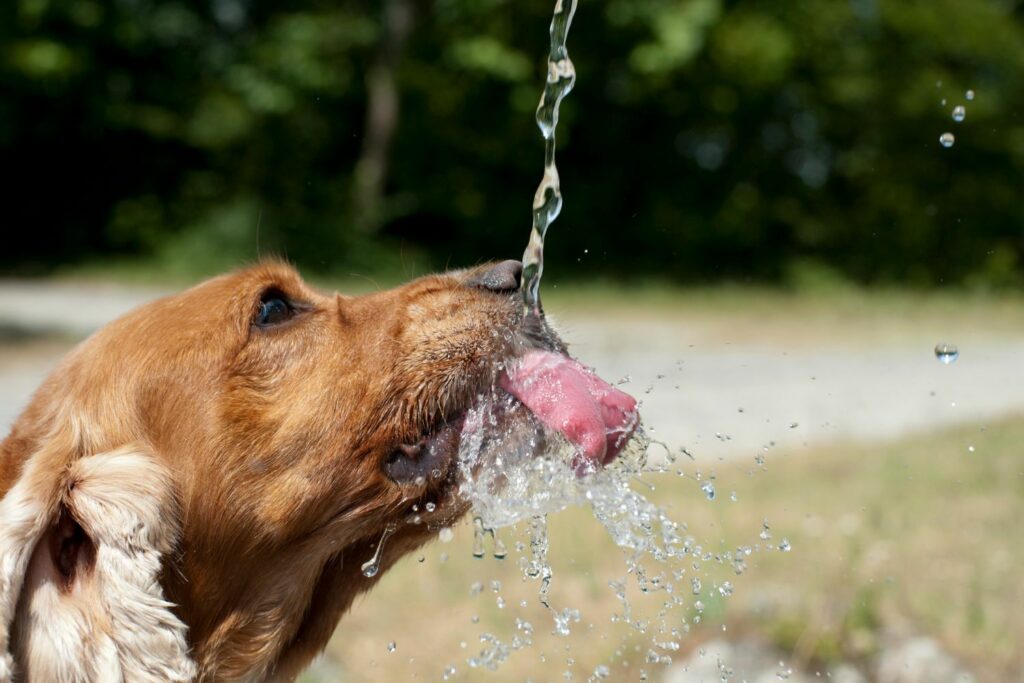
2. Early Morning or Late Evening Walks
To avoid the scorching midday temperatures, adjust your walking schedule. Early in the morning or late in the evening when the sun is less intense, the temperatures are cooler, making it safer and more comfortable for your dog. Not only will this prevent overheating, but it will also protect your dog’s paws from hot surfaces. Also, limit strenuous exercise on hot days. Opt for light walks and play sessions during the cooler parts of the day. Always carry water with you to keep your dog hydrated during walks.
3. Appropriate Grooming
While it might seem like a good idea to shave your dog’s coat to keep them cool, this can lead to sunburn and overheating. Instead, regularly brush your dog to remove excess fur and help air circulate through their coat. Never shave your dog — the layers of dogs’ coats protect them from overheating and sunburn. Always consult with a professional groomer or veterinarian to understand the best grooming routine for your dog’s specific breed and coat type.
4. Monitor Playtime
Be cautious about overexertion during playtime, especially if your dog is very active or a brachycephalic breed (like bulldogs or pugs) that is more susceptible to breathing difficulties in the heat.
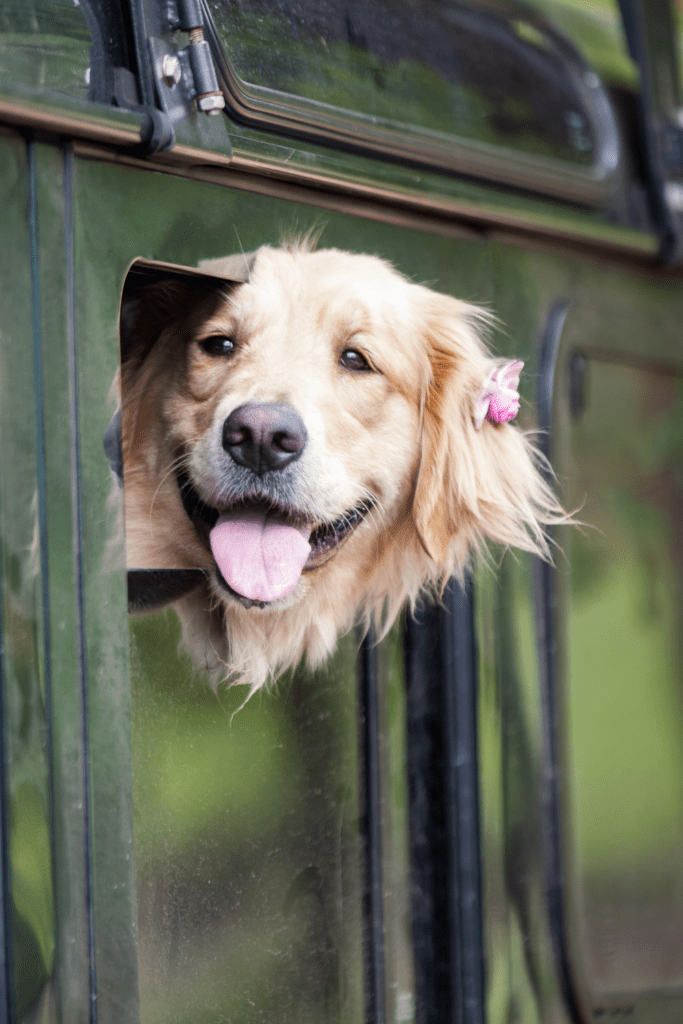
5. Never Leave Your Dog in the Car:
Even with the windows down, temperatures inside a car can skyrocket within minutes. Leaving your dog in a parked car can lead to fatal heatstroke.
Hot Dog: Quick Cooling Techniques
When you notice your dog is too hot and displaying signs of discomfort or the onset of heatstroke, it’s critical to act fast and cool them down. In addition to contacting your vet, here are some steps you can take to cool him/her down:
- Move to a Cool Area: Immediately bring your dog to a shaded or air-conditioned area to stop the heat exposure. A cooler environment is the first step in reducing their body temperature.
- Offer Water: Encourage your dog to drink small amounts of cool (not cold) water. Drinking too quickly or too much can cause vomiting or bloating, so offer small sips at a time.
- Use Cool (Not Cold) Water: Gently pour or use a wet cloth with cool (not cold) water on your dog’s body, especially on the neck, underarms, and between the hind legs. You can also wet their paws and ears. Avoid using ice or extremely cold water as this can cause shock and may worsen the situation.
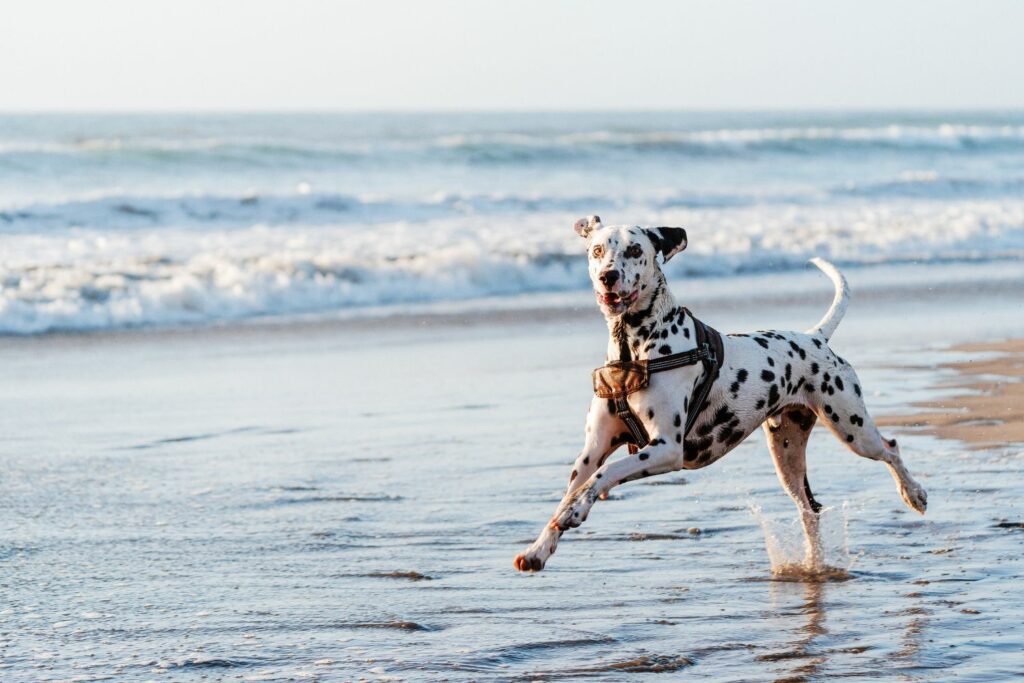
- Fan Your Dog: Use a fan to help reduce your dog’s temperature. The air will help evaporate the water on their fur, which cools the skin down (much like how sweat works on humans).
- Apply a Cooling Vest or Mat: If you have a cooling vest or mat, use it according to the product instructions. These items can be very effective in helping to lower a dog’s body temperature.
Cool Treats and Fun Activities for Hot Days
When the temperature rises, keep your dog entertained and cool with these fun treats and activities.
Frozen Treats
- Frozen Kongs: Fill a Kong toy with peanut butter, banana, plain unsweetened yoghurt or your dog’s favourite filling, and freeze it. This provides a cooling, long-lasting challenge for your dog.
- Ice Cubes with a Twist: Freeze chicken broth or beef broth in ice cube or popsicle tray for a tasty, hydrating treat. You can also add small treats or pieces of fruit like blueberries or apple slices to the mix for an added surprise.
- Dog Ice Cream: Stock up your freezer with some dog-friendly ice cream. Make sure you read the ingredients list and avoid any added sugar.
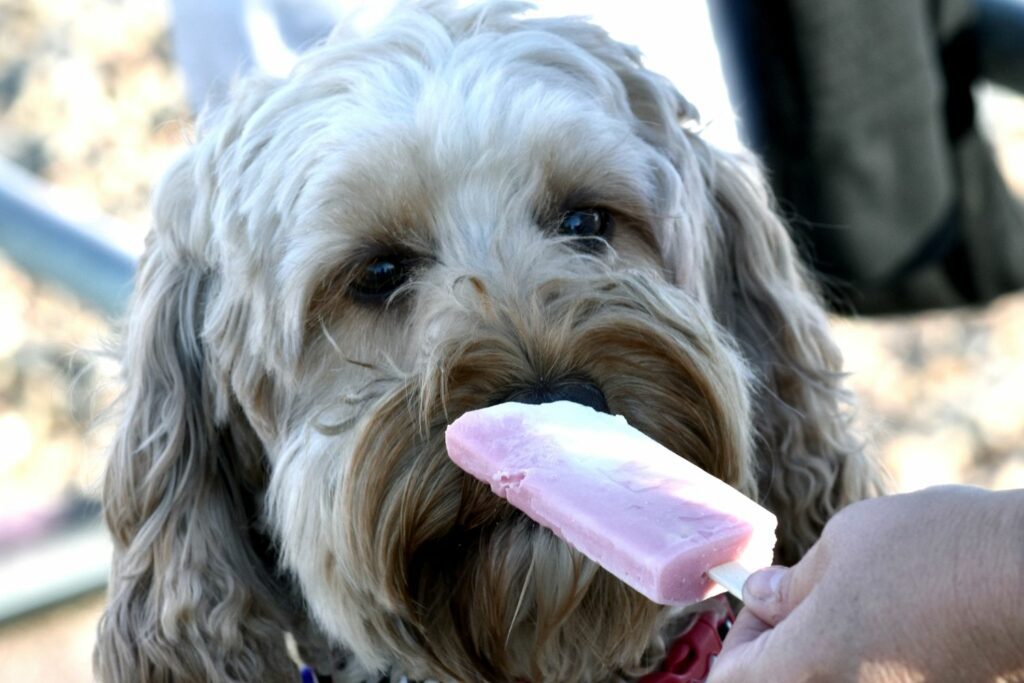
Water-Based Activities
- Kiddie Pool Party: Set up a kiddie pool in a shaded area for your dog to splash around in. You can add toys or toss a few treats in the water for extra fun.
- Sprinkler Fun: If your dog isn’t afraid of the water, running through a sprinkler can be a great way to cool off and play at the same time.
- Beach or Lake Outings: Visit a dog-friendly beach or lake where your dog can swim. Always supervise them around water and make sure they’re safe and comfortable.
FAQs About Dogs and Summer Heat
Q1: How can I tell if my dog is overheating?
A: Signs of overheating in dogs include excessive panting, drooling, reddened gums, vomiting, diarrhoea, lethargy, uncoordinated movement, or collapse. If your dog is displaying any of these symptoms, it’s important to cool them down immediately and consult a veterinarian.
Q2: Is it safe to shave my dog’s fur in the summer?
A: Shaving a dog’s coat might not always be the best way to keep them cool. For many breeds, their coat provides insulation and protection from the sun. It’s important to regularly groom and brush to help air circulate through the coat, but shaving should be done cautiously and preferably discussed with a groomer or vet first.
Q3: Can all dogs swim?
A: Not all dogs are natural swimmers, and some may even dislike or be afraid of water. Always introduce your dog to water gradually and never force them to swim. For breeds less adept at swimming, or for any dog swimming in deeper water, consider using a dog life jacket for safety.
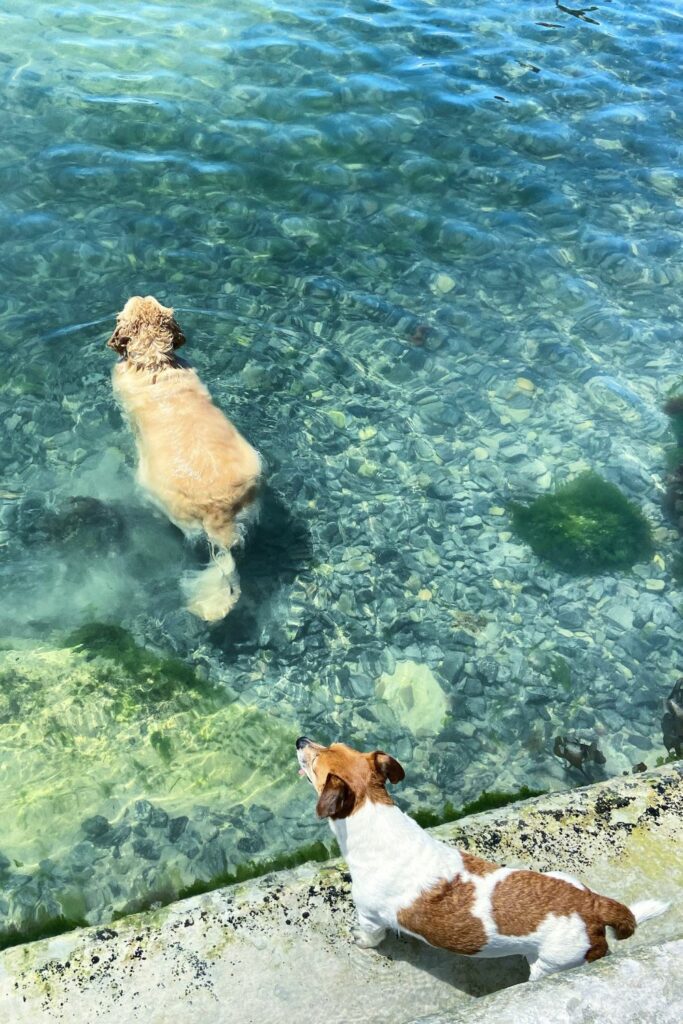
Q5: Are certain dog breeds more at risk in the heat?
A: Yes, brachycephalic breeds (like Bulldogs, Pugs, and Shih Tzus) with short noses, elderly dogs, puppies, and dogs with certain health conditions are more susceptible to heatstroke. Dogs with thick fur or dark-coloured coats may also feel the heat more intensely.
Q6: How can I exercise my dog safely when it’s hot outside?
A: Opt for early morning or late evening walks when temperatures are cooler. Keep walks shorter and consider water activities or indoor play as alternatives. Always be prepared to modify the intensity and duration of exercise based on the day’s heat and humidity.
Q7: What should I do if my dog gets sunburned?
A: If you suspect your dog has a sunburn, move them to a shaded area and consult your veterinarian. For future prevention, limit sun exposure during peak hours and consider using pet-safe sunscreen on exposed areas like their nose and ears, especially for dogs with thin or light-coloured coats.
Conclusion
Keeping your dog safe and healthy during the hot summer days requires vigilance and preparation. By following these tips, you can ensure your beloved pet enjoys the summer safely. Remember, if you ever suspect your dog is suffering from a heat-related condition, contact your veterinarian immediately. Your proactive care is the best way to ensure your dog enjoys a fun and safe summer!

